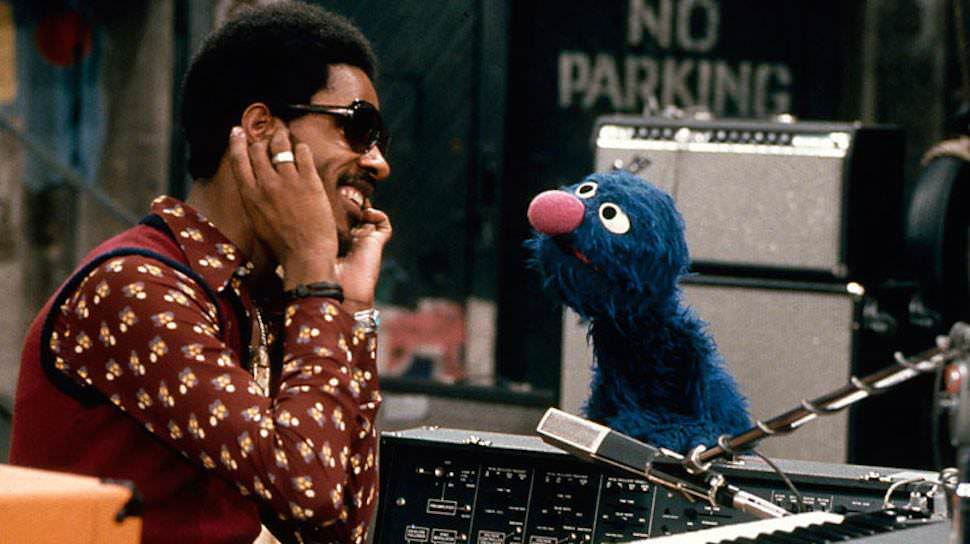
Television and media has grown into a major influence through out pop culture. With the power tv has, stations such as pbs, Public Broadcasting Service, grew to become a prominent provider of educational programing. Shows like “Sesame Street” help to expose kids to certain situations providing them with problem solving skills and a stronger sense of social interaction.
Sesame Street began by Joan Ganz Cooney and the Carnegie Corporation’s vice president Lloyd Morrisett. Their goal was to provide educational programs to kids ultimately preparing them for preschool and further social situations. In 1968 the show was funded with an $8 million grant. Provided by Carnegie, the Ford Foundation, and the US govt. Through Cooney’s study, “Television in Preschool Education”, Sesame Street evolved hoping to better prepare young children to the classroom.
Writers of Sesame Street created the goal of appealing to kids at the same time as appealing to adults, “But the rule was you should never go over the heads of the kids. Anything that appealed to adults had to either appeal to the kids too or be something that they didn’t need to know.”
On April 12, 1973, Stevie Wonder visited the famous neighborhood to hang out and perform some music. Having Stevie Wonder on the show the was a huge success because he embodies all the characteristics of the show helps promote the shows goals. He helped to break down racial, gender, and socioeconomic barriers for children and their parents. Stevie wonder not only performed but he interacted with characters such as Grover, trying to help him sing. He also composed a song about the show entitled “123 Sesame Street”. This song featured a talkbox, an instrument/piece of technology that provides an additional timber to your voice similar to a vocoder.
Specifically, the performance of Stevie’s hit song “Superstition” from his recently release album “Talking Book”, provided the viewers with “6 and ½ minutes of concentrated happiness”. In recent and current times of the Vietnam war as well as the cold war, Stevie Wonder was able to transcend happiness through a television screen with his infectious smiles and dancing. Sesame Street was exposing their audience to genuine live music inspiring kids to be creative and happy in their lives. It becomes immediately apparent the importance of community and how to interact and communicate with others. Through communication the band is able to provide a groove that feels good leading to has a climax within the music.
Stevie was a child prodigy himself but at the age of 23 he is able to relate to all the kids on set, all the kids watching, and all the adults, providing inspiration to learn about and perform music. He proves how amazing performing can feel and how fun making music can be. Kids on set are filmed going wild dancing due to the infectious feeling. The prime example is the kid hanging off the fires escape moving uncontrollably. Kids are able to express themselves through dancing in this high-energy environment filled with enthusiasm.
Lastly, one of the most powerful parts of this performance was the diversity present on set. Kids of different races were dancing together as if nothing else mattered in the world. Members of the band were different races yet they were coexisting, working together to create something amazing. The setting of the show is in an urban neighborhood implying different economic backgrounds and the leader of the performance is a blind man. Yet, for the 6 and ½ minutes of music nothing else in the world seems to exist. As the viewer you get a “Glimpse into the utopic possibility of a place, neither child- nor adult-oriented but simply human”. The performance teaches kids the power of community and to be accepting of everyone no matter what. The power of music is thoroughly evident.
Through comments on Youtube, you can see the noticeable impact the performance had on others from various parts of the world.



- https://slate.com/culture/2016/12/stevie-wonders-1973-performance-of-superstition-on-sesame-street.html
- https://www.npr.org/2015/08/24/433512375/in-new-memoir-maria-tells-us-how-she-got-how-she-got-to-sesame-street
- https://ultimateclassicrock.com/stevie-wonder-sesame-street/
- https://www.biography.com/news/sesame-street-history-hbo
- https://www.theatlantic.com/family/archive/2019/03/friendship-files-sesame-street-songwriters-behind-put-down-duckie/585895/

Hi Ian,
This is a wonderful post! I absolutely love Sesame Street and it brought me such a joy reading about it and the power that music has. I loved how you started by explaining the history of TV and Sesame Street, and their show objectives. It was quite an effective transition into the introducing of Stevie Wonder’s visit. Use of talkbox is also an intriguing fact to know – by publicly utilizing an electronic device, it leaves such memorable remarks to both kids and adults by providing a unique sound and happy virus that comes from music. I wish I could read more about how the appearance of Stevie Wonder in the show and the kids who were dancing to the music are a significant matter that represents collapses of the racial and social barrier and how it historically had been treated in TV show histories. I understand that it is such a bright and utopic post, but I felt like it was missing a constructive criticism or an argument, or perhaps I wanted to hear a little bit of explanation on one of the Youtube comments: “How is this educational?”
However, overall an awesome post and really enjoyed reading!
-Sia